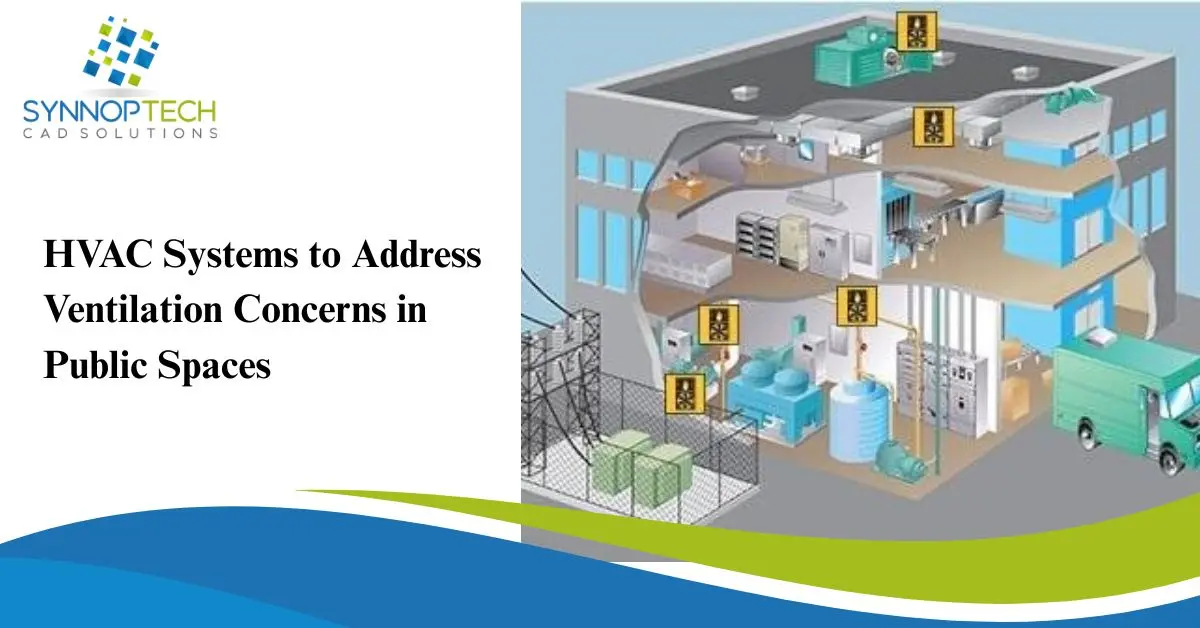Ventilation is and always has been a critical element of a healthy indoor environment—but recently, it has become the more significant priority for indoor, public spaces like offices, shopping malls, schools, hospitals, and airports. In my 20 years in the HVAC industry, I have seen firsthand how advancements in ventilation systems have transformed public health, comfort, and safety.
A properly designed HVAC system does not only manage temperature but also provides clean air circulation and humidity control and removes contaminants, thus providing a safer and more comfortable use of public spaces for the general public.
The following will examine how the modern HVAC system addresses ventilation issues in public spaces.
The Importance of Ventilation to Public Spaces
Public spaces are occupied by large groups of people, which generates higher levels of carbon dioxide, airborne particles, and possible pathogens. Inadequate ventilation can cause health issues and discomfort and can even encourage the spread of infectious diseases.
Effective ventilation helps to:
- Maintain indoor air quality (IAQ)
- Control humidity and temperature
- Reduce airborne contaminants and odors
- Promote occupant comfort and well-being
In short, ventilation is not optional — it’s a critical part of public safety and facility management.
The Role of HVAC Systems in Modern Ventilation
HVAC systems (heating, ventilation, and air conditioning) are the cornerstone of indoor environmental control. They control the exchange of air between an interior and exterior space, filter out contaminants, and deliver thermal comfort.
A well-engineered HVAC system balances three key elements:
- Fresh air intake to dilute indoor pollutants
- Air filtration to remove dust, allergens, and pathogens
- Air distribution to ensure even circulation throughout the space
Addressing Common Ventilation Concerns in Public Buildings
Insufficient Air Changes per Hour (ACH)
Many older buildings do not have the adequate air exchange rates necessary to keep the air fresh and clean.
Solution: Modern HVAC systems are designed for air exchange rates that rate according to ASHRAE (American Society of Heating, Refrigerating and Air-Conditioning Engineers) to exceed the adequate ACH for various building types.
Poor Filtration Efficiency
Typical filters do not capture small particles, bacteria, or viruses.
Solution: Installing HEPA (High-Efficiency Particulate Air) or MERV-13+ filters will greatly improve air purity by capturing microscopic particles.
Inadequate Air Distribution
Stagnant air pockets can create pockets of poor air quality.
Solution: Well-designed ductwork, diffusers, and air balancing will ensure uniform air distribution and eliminate stagnant air pockets.
Energy Inefficiency-Related Issues
Ventilation often increases energy costs.
Solution: Energy recovery ventilators (ERVs) and variable air volume (VAV) systems will achieve energy efficiency while maintaining air quality without increasing energy costs.
Smart HVAC Solutions for Enhanced Ventilation
Technology has revolutionized how we design and manage HVAC systems in public spaces. Some of the most effective innovations include:
- Demand-Controlled Ventilation (DCV): Uses CO₂ sensors to adjust airflow based on occupancy levels.
- UV-C Air Sterilization: Destroys airborne microorganisms and improves IAQ.
- IoT-Based Monitoring: Tracks temperature, humidity, and air quality in real time.
- Zoning Systems: Allows different areas to be ventilated according to occupancy and use.
These technologies not only improve health and comfort but also reduce operational costs.
The Impact of COVID-19 on Ventilation Design
The pandemic reshaped how we think about indoor air. Suddenly, ventilation wasn’t just about comfort — it became a matter of safety.
Since then, building codes and design practices have evolved to:
- Increase outdoor air intake
- Improve filtration standards
- Include touchless and automated controls
- Integrate air purification systems into central HVAC networks
Public buildings are now being designed with resilient and adaptable ventilation systems capable of responding to future health challenges.
Maintenance: The Key to Sustainable Performance
Even the best HVAC system in buildings can underperform without regular maintenance. Filters clog, ducts accumulate dust, and sensors drift out of calibration over time.
Best practices include:
- Scheduled filter replacements
- Regular duct cleaning
- Routine system inspections and performance audits
- Monitoring air quality parameters periodically
Proper maintenance ensures long-term efficiency, reliability, and healthy air quality.
Balancing Comfort, Health, and Efficiency
Through my experience as an HVAC professional, I have found that good ventilation doesn’t necessarily mean over-ventilating — good ventilation means finding the ideal “sweet spot.” Insufficient ventilation can cause stale air, while too much ventilation can waste energy; the objective is to develop systems that can keep comfort, health, and sustainability balanced.
Summary
Public spaces intend to bring people together — but only under conditions when that air is clean, safe, and refreshing. HVAC systems enable just that.
As I discussed by way of two decades in the HVAC field, I will say this:
Get robust ventilation design, quality filtration, and adequate maintenance. It is not just good engineering; it is a public health necessity and also a comfort and peace-of-mind enrolment for productivity and purposefulness.


